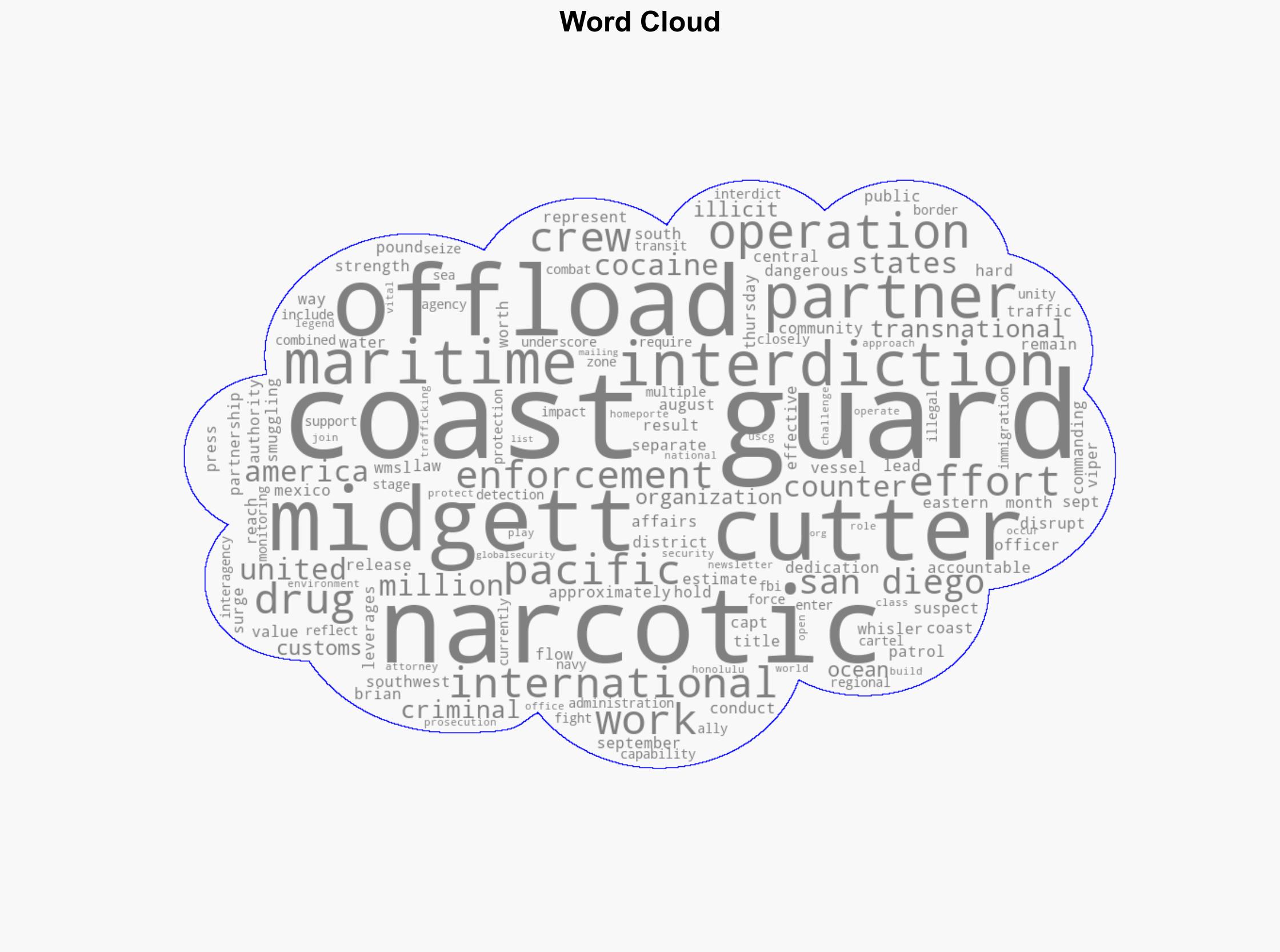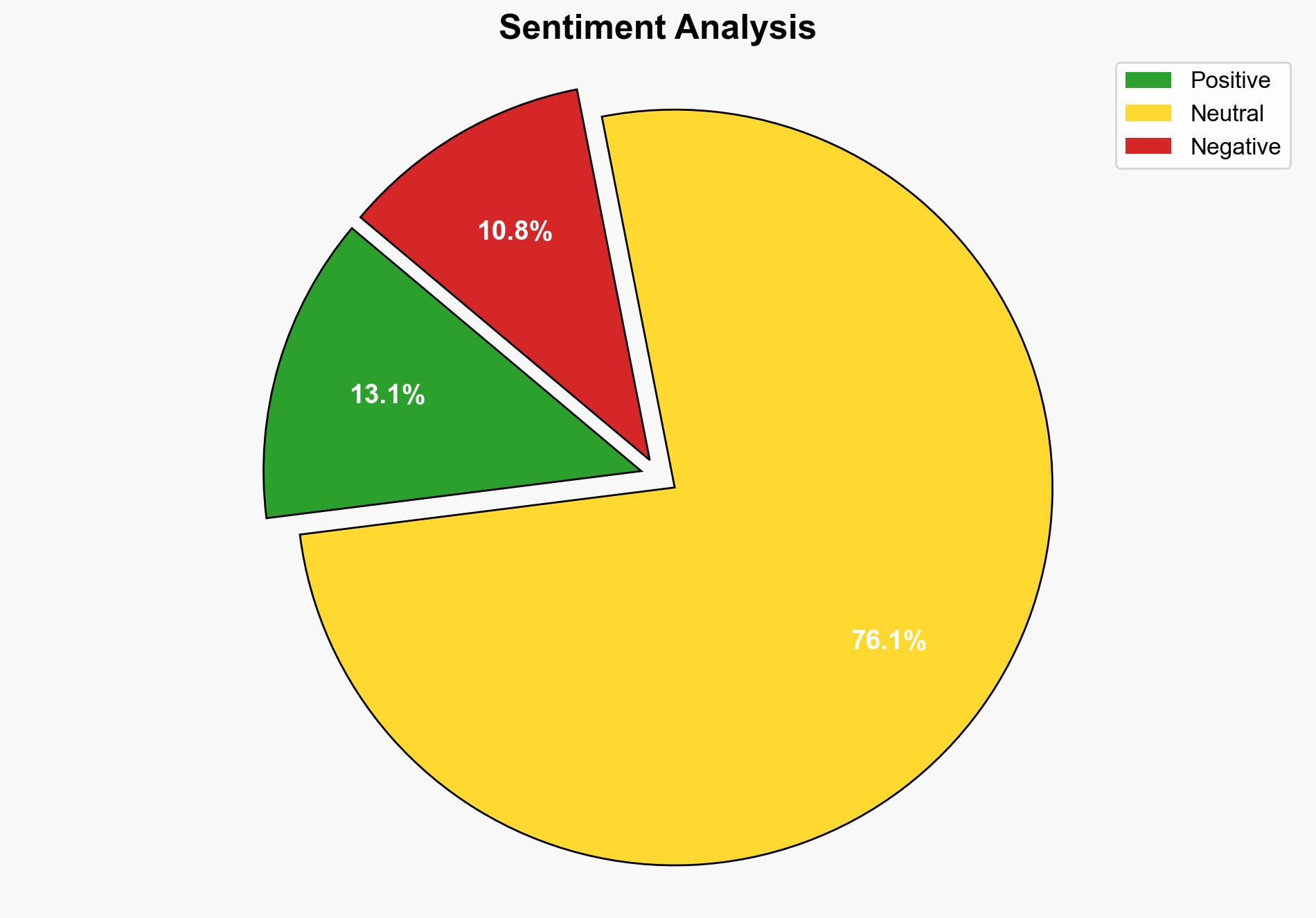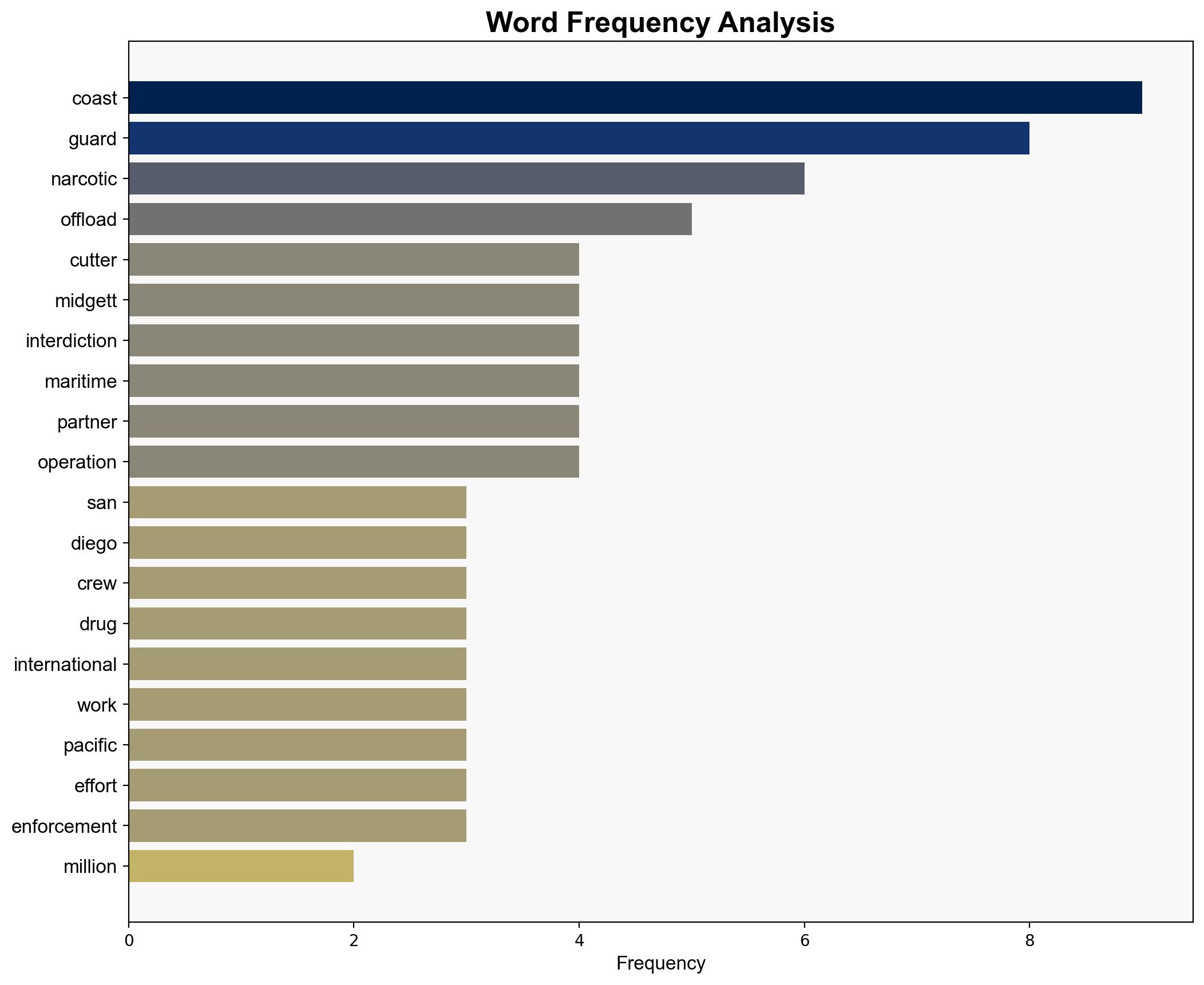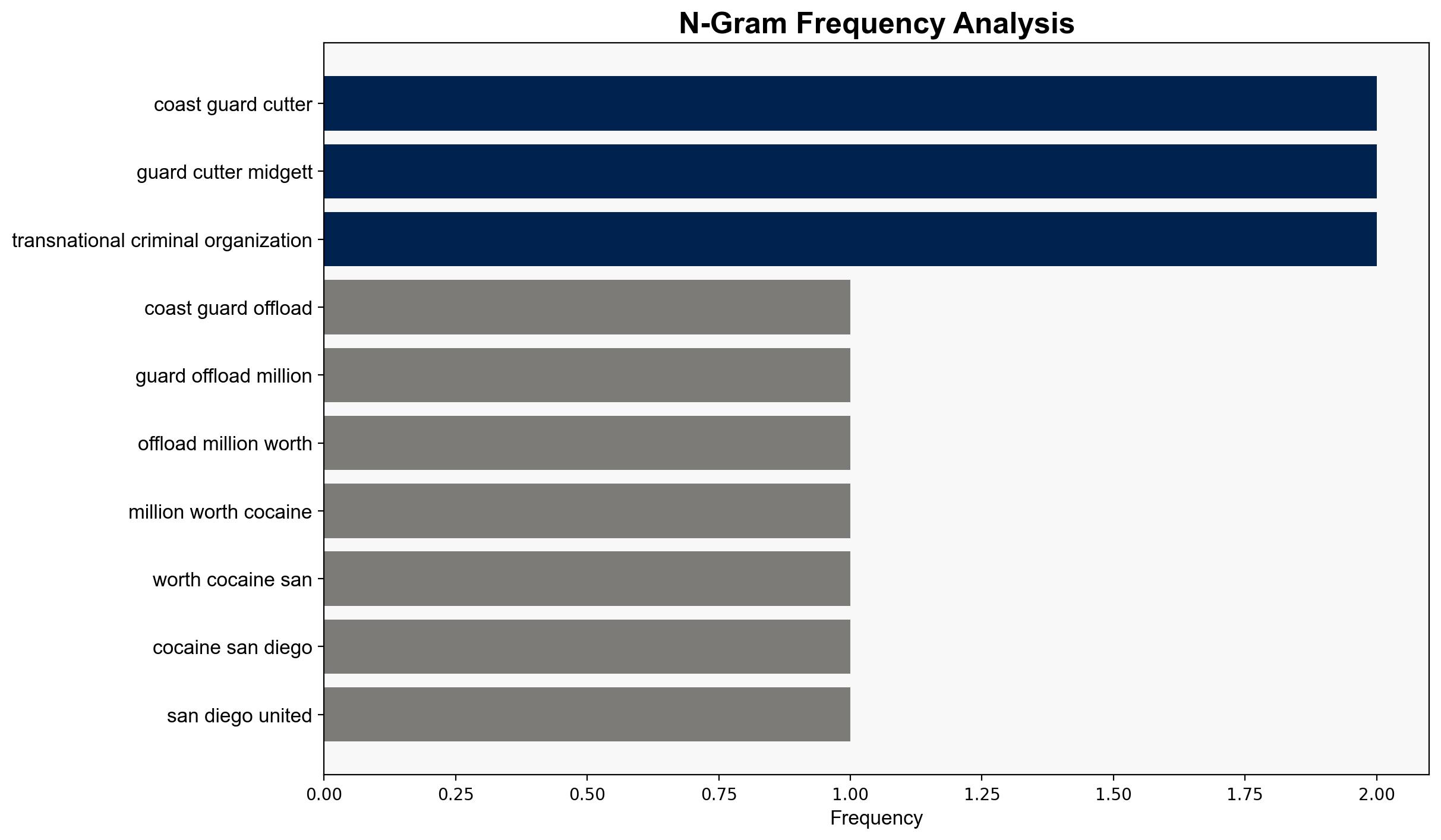Coast Guard offloads more than 156 million worth of cocaine in San Diego – Globalsecurity.org
Published on: 2025-09-29
Intelligence Report: Coast Guard offloads more than 156 million worth of cocaine in San Diego – Globalsecurity.org
1. BLUF (Bottom Line Up Front)
The most supported hypothesis is that the interdiction of cocaine by the Coast Guard is part of a broader, effective international collaboration aimed at disrupting transnational criminal organizations (TCOs) in the Eastern Pacific. Confidence in this assessment is moderate due to potential gaps in intelligence regarding the full scope of TCO operations. Recommended action includes enhancing interagency and international cooperation to address potential adaptive strategies by TCOs.
2. Competing Hypotheses
1. **Hypothesis A**: The successful interdiction is primarily due to enhanced interagency and international cooperation, resulting in effective maritime surveillance and interdiction operations.
2. **Hypothesis B**: The interdiction is a temporary setback for TCOs, who are likely to adapt their methods and routes to circumvent current enforcement strategies.
Using ACH 2.0, Hypothesis A is better supported by the evidence of coordinated efforts among the Coast Guard, Navy, Customs and Border Protection, and international partners. Hypothesis B is plausible but lacks direct evidence in the current report, though historical patterns of TCO adaptation support its consideration.
3. Key Assumptions and Red Flags
– **Assumptions**: The report assumes that current interdiction efforts are sustainable and that international cooperation will continue at current levels.
– **Red Flags**: Lack of detailed information on TCOs’ adaptive strategies and potential shifts in drug trafficking routes. The report does not address potential internal challenges within partner agencies.
4. Implications and Strategic Risks
The continued success of interdiction efforts could lead to TCOs seeking alternative routes or methods, potentially increasing trafficking through other regions or using advanced technologies. This poses risks of increased drug flow in less monitored areas and potential escalation in violence as TCOs protect their operations. Economically, sustained interdiction could impact the illegal drug market dynamics, potentially affecting prices and demand.
5. Recommendations and Outlook
- Enhance intelligence-sharing frameworks among international partners to anticipate and counter TCO adaptations.
- Invest in technology and training to improve detection and interdiction capabilities.
- Scenario Projections:
- Best Case: Continued successful interdictions lead to a significant reduction in drug trafficking through the Eastern Pacific.
- Worst Case: TCOs adapt quickly, leading to increased trafficking through less monitored routes, overwhelming current resources.
- Most Likely: Incremental improvements in interdiction efforts with TCOs gradually adapting, maintaining a persistent threat.
6. Key Individuals and Entities
– Capt. Brian Whisler, commanding officer of the Coast Guard Cutter Midgett.
– United States Coast Guard, Navy, Customs and Border Protection, FBI, Drug Enforcement Administration, Immigration and Customs Enforcement.
7. Thematic Tags
national security threats, counter-narcotics, transnational crime, maritime security




